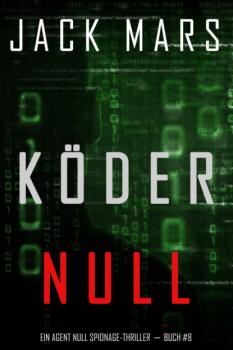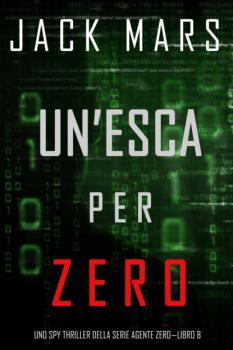MREADZ.COM - много разных книг на любой вкус
Скачивание или чтение онлайн электронных книг.Ein tödlicher Kuss
„Sehr unterhaltsam. Ich kann dieses Buch jedem Leser wärmstens für die eigene Bibliothek empfehlen, der einen sehr gut geschriebenen Krimi mit einigen Wendungen und einer intelligenten Handlung schätzt. Du wirst nicht enttäuscht sein. Die perfekte Lektüre für ein frostiges Wochenende!“. –Books and Movie Reviews, Roberto Mattos (bezugnehmenden auf Der Tod kam vor dem Frühstück) . EIN TÖDLICHER KUSS (EIN LACEY DOYLE COZY MYSTERY – BUCH 5) ist Buch fünf einer charmanten neuen Krimiserie, die mit DER TOD KAM VOR DEM FRÜHSTÜCK (Buch #1) beginnt, einem #1 Bestseller mit über 100 5-Sterne-Bewertungen – und einem kostenlosen Download!Lacey Doyle, 39 Jahre alt und frisch geschieden, hat eine dramatische Veränderung durchgemacht: Sie hat ihrem schnellen Leben in New York City den Rücken gekehrt und sich in der malerischen Küstenstadt Wilfordshire in England niedergelassen… Bei einem romantischen Tagesausflug in die ländlichen Regionen Englands hat Lacey besonderes Glück auf einem Antiquitätenmarkt und stolpert über einen unglaublichen Fund. Sie hat große Hoffnungen, als sie das Objekt zum Mittelpunkt ihrer nächsten Auktion macht. . Aber als der Sommer sich dem Ende neigt, kommen zwei High-Roller in die Stadt und streiten sich um die Antiquität. Nicht nur ihre Egos sind groß, sondern scheinbar auch ihre Geldbörsen. Als einer der beiden gewinnt, die Auktion aber auf Grund einer Formalität verliert, bricht das Chaos aus. Doch es kommt noch schlimmer, als einer von ihnen tot aufgefunden wird… Lacey muss alles in ihrer Macht Stehende tun, um ihren Laden und ihren Ruf zu retten – und mit der Hilfe ihres geliebten Hundes einen mysteriösen Tod aufzuklären… Buch #6 der Reihe erscheint bald! .
Hexerei zur Teestunde
„Der perfekte Liebesroman für den Urlaub mit dem gewissen Etwas: sein Enthusiasmus und die wunderschönen Beschreibungen bieten einen unerwarteten Blick auf die Komplexität der sich entwickelnden Liebe und der sich veränderten Psyche. Er ist eine unterhaltsame Empfehlung für Fans von Liebesromanen, die nach etwas mehr Komplexität bei ihrer Lektüre suchen.“. –Midwest Book Review (Für jetzt und für immer). HEXEREI ZUR TEESTUNDE: EIN UNHEILVOLLER BAND ist der Debut-Roman einer neuen, mitreißenden Cozy-Krimireihe der Bestsellerautorin Sophie Love, Autorin der Reihe Die Pension in Sunset Harbor, einem Nr.-1-Bestseller mit mehr als 200 Fünf-Sterne-Bewertungen… Als die 29-jährige Alexis Blair bei ihrer Arbeit in einem Verlag gefeuert wird und am selben Tag auch noch die Beziehung zu ihrem Freund in die Brüche geht, fragt sie sich, ob das alles vielleicht Zeichen sind, einen Neuanfang zu wagen. Sie beschließt, dass es an der Zeit ist, ihren Kindheitstraum zu verwirklichen: ein eigener Buchladen – selbst, wenn sie dafür Boston hinter sich lassen und eine Stelle in einem kuriosen Buchladen in einer Kleinstadt am Meer, die eine Stunde entfernt liegt, annehmen muss… Doch Alexis erkennt bald, dass der sonderbare Laden mehr ist als nur ein Geschäft für seltene und magische Bücher. In dem geheimen Hinterzimmer des Ladens, mit dem exzentrischen Besitzer und in der Kleinstadt selbst geht etwas Seltsames vor sich… Und als eine Leiche auftaucht, steckt Alexis plötzlich mit ihrer geliebten zugelaufenen Katze bis über beide Ohren in der Sache drin… Dieser packende Krimi steckt voller übernatürlicher Phänomene, Rätsel, Geheimnisse und Liebe vor der Kulisse einer Kleinstadt, die genauso sonderbar und liebenswert wie der Laden ist – DER KURIOSE BUCHLADEN ist ein Roman, der Ihr Herz erwärmt und bis spät in die Nacht für gute Unterhaltung sorgt. . „Die Romantik ist spürbar, aber sie ist nicht erdrückend. Applaus an die Autorin für den gelungenen Auftakt zu einer Romanreihe, die uns Unterhaltung pur verspricht.“. –Books and Movies Reviews (Für jetzt und für immer). Buch 2 und Buch 3 in der Romanreihe —EIN TÖDLICHES MANUSKRIPT und EINE GEFÄHRLICHE SEITE – sind jetzt auch verfügbar!
Köder Null
„Sie werden nicht schlafen, bis Sie AGENT NULL zu Ende gelesen haben. Ein erstklassiges Werk, mit einer Reihe von gut entwickelten, sehr genießenswerten Figuren. Die Beschreibung der Action-Szenen befördert uns direkt in eine Realität, in der man meinen könnte, man säße im Kino mit Surround-Sound und 3D (es würde wirklich einen tollen Hollywood Film abgeben). Ich kann die Fortsetzung kaum abwarten.”. –Roberto Mattos, Books and Movie Reviews. KÖDER NULL ist Buch #8 der #1 Bestseller AGENT NULL-Reihe, die mit AGENT NULL (Buch #1) beginnt. Es erhielt fast 200 Fünf-Sterne-Rezensionen und kann kostenlos herunterladen werden… Ein neues high-tech Schienengewehr, das die Fähigkeit hat, eine unaufhaltsame Rakete mit einer Geschwindigkeit sieben Mal so schnell wie Schall zu feuern, wurde erfunden - und das Schicksal Amerikas ist bedroht. Wer oder was ist das Zielobjekt? Und wer steckt hinter dem Abschuss?. In einem verrückten Wettstreit gegen die Zeit muss Agent Null all seine Fähigkeiten einsetzen, um die Quelle dieser unaufhaltsamen Waffe zu entdecken und ihr Ziel herauszufinden, bevor es zu spät ist… Doch gleichzeitig erfährt Null von einer schockierenden Neuentwicklung in seinem mentalen Zustand, die ihn endgültig außer Gefecht setzen könnte. Kann er die Welt retten - und kann er sich selbst retten?. KÖDER NULL (Buch #8) ist ein Spionage-Thriller, den man einfach nicht aus der Hand legen kann. . „Thriller-Schriftstellerei vom besten.”. –Midwest Book Review (in Bezug auf Koste es was es wolle). „Einer der besten Thriller, die ich dieses Jahr gelesen habe.”. –Books and Movie Reviews (in Bezug auf Koste es was es wolle). Jack Mars’ #1 Bestseller LUKE STONE THRILLER Serie (7 Bücher) ist ebenfalls erhältlich. Sie beginnt mit Koste es was es wolle (Buch #1), das gratis heruntergeladen werden kann und über 800 fünf-Sterne-Rezensionen erhielt!
Un’esca per Zero
“Non andrai a dormire finché non avrai finito di leggere i libri dell'AGENTE ZERO. I personaggi, magistralmente sviluppati e molto divertenti, sono il punto di forza di questo lavoro superbo. La descrizione delle scene d'azione ci trasporta nella loro realtà; sembrerà di essere seduti in un cinema 3D dotato dei migliori simulatori di realtà virtuale (sarebbe un incredibile film di Hollywood). Non vedo l'ora che venga pubblicato il seguito”.. –Roberto Mattos, Books and Movie Reviews. UN’ESCA PER ZERO è il libro? 8 della prima serie di best seller AGENTE ZERO, che inizia con AGENTE ZERO (Libro 1), in download gratuito e oltre 200 recensioni a cinque stelle. . Un nuovo cannone a rotaia ad alta tecnologia capace di sparare un missile micidiale, sette volte più veloce del suono, mette a rischio il destino dell’America. Chi è o qual è il suo obiettivo? E chi c’è dietro il suo lancio?. In una folle lotta contro il tempo, l’Agente Zero deve usare tutta la sua abilità per scoprire la fonte di quest’arma imbattibile e riuscire a scoprire verso dove è puntata prima che sia troppo tardi. Allo stesso tempo Zero viene a conoscenza di un nuovo scioccante sviluppo riguardo alla propria condizione mentale, una situazione che potrebbe metterlo fuori gioco per sempre. Riuscirà a salvare il mondo e a salvare sé stesso?. UN’ESCA PER ZERO (Libro 8) è un coinvolgente thriller di spionaggio che vi terrà svegli fino a tarda notte. “Il meglio del genere Thriller”. –Midwest Book Review (su A ogni costo). “Uno dei migliori thriller letti quest’anno”. –Books and Movie Reviews (su A ogni costo). E’ disponibile anche la serie di best seller di Jack Mars LUKE STONE (7 libri), che inizia con A ogni costo (Libro 1), un libro a download gratuito con oltre 800 recensioni a 5 stelle!
Nichts Als Verstecken
„Wenn man glaubt, das Leben könnte nicht besser werden, schafft Blake Pierce ein weiteres Thriller Meisterwerk voller Mysterien! Dieses Buch ist voller Wendungen und das Ende bringt eine überraschende Enthüllung, die man nie erwartet hätte. Ich empfehle jedem Leser, der Freude an einem sehr gut geschriebenen Thriller hat, dringend sich dieses Buch zuzulegen.? –Bücher und Filmkritiken, Roberto Mattos. NICHTS ALS VERSTECKEN ist Buch Nr. 3 in einer neuen FBI-Thriller-Serie von USA Today Bestsellerautor Blake Pierce, dessen Bestseller Nr. 1 VERSCHWUNDEN (Buch Nr. 1) (ein kostenloser Download) über 1.000 Fünf-Sterne-Kritiken erhalten hat. . Ein italienisches Ehepaar, das in Deutschland Urlaub macht, wird brutal ermordet aufgefunden, was einen internationalen Aufschrei auslöst. FBI-Spezialagentin Adele Sharp ist die einzige mit der internationalen Expertise, die die Grenzen überschreitet und den Mörder aufhält – und sie findet sich an der Seite ihres entfremdeten Vaters wieder, der weit mehr über den ungeklärten Mord an ihrer Mutter weiß, als er zugibt… Obwohl sie immer noch von den jüngsten Ereignissen in Paris erschüttert ist, muss sich Adele auf eine wilde Jagd quer durch Deutschland begeben und auf Schritt und Tritt Lügen und Täuschung aufdecken… Können Adele und ihr Vater die Kluft zwischen ihnen überwinden?. Und kann sie den Mörder aufspüren, bevor die Tragödie weitergeht?. Eine actiongeladene Krimiserie voller internationaler Intrigen und fesselnder Spannung: Mit NICHTS ALS VERSTECKEN können Sie bis spät in die Nacht hinein blättern… Buch Nr. 4 der ADELE SHARP MYSTERY-Reihe wird bald erhältlich sein.
Nichts Als Töten
“EIN MEISTERWERK DES THRILLER UND KRIMI-GENRES. Blake Pierce gelingt es hervorragend, Charaktere mit so gut beschriebenen psychologischen Facetten zu entwickeln, dass wir das Gefühl haben, in ihren Gedanken zu sein, ihre Ängste zu spüren und ihre Erfolge zu bejubeln. Dieses Buch voller Wendungen wird Sie bis zur letzten Seite wachhalten.“. –Books and Movie Reviews, Roberto Mattos (über So Gut Wie Vorüber). NICHTS ALS TÖTEN ist das vierte Buch einer neuen FBI Thrillerserie des USA Today Bestsellerautors Blake Price, dessen Nummer 1 Bestseller Verschwunden (Buch 1) (kostenloser Download) über 1.000 Fünfsternebewertungen erhalten hat… Eine junge Frau wird auf einer Landstraße in Deutschland auf der Flucht vor ihrem Angreifer wie betäubt aufgefunden. Da sie sprechen und sich erinnern kann, besteht vielleicht auch die Möglichkeit die Behörden zu seinem Versteck führen – und die anderen Frauen zu retten, bevor es zu spät ist… Als der Fall sich international auszubreiten beginnt und Dutzende von Opfern aus vielen verschiedenen Ländern stammen, erkennen die Behörden schnell, dass es nur einen Weg zur Lösung dieses Problems gibt: die Einschaltung der FBI-Spezialagentin Adele Sharp, die dreifache Staatsbürgerschaft der USA, Frankreichs und Deutschlands hat… Aber selbst mit Adeles brillantem Verstand könnte dieser Fall, der Erinnerungen weckt, die ihr viel zu nahe gehen, für sie eine echte Herausforderung sein… Kann Adele die anderen Frauen retten, bevor es zu spät ist?. Kann sie sich selbst retten?. Eine actiongeladene Krimiserie voller internationaler Intrigen und fesselnder Spannung: NICHTS ALS TÖTEN lässt Sie bis spät in die Nacht blättern… Buch 5 der Reihe – NICHTS ALS MORD – ist jetzt ebenfalls erhältlich..
Misdaad in het Donker
MISDAAD IN HET DONKER (EEN LACEY DOYLE COZY MYSTERY – BOEK 3) is boek drie in een aantrekkelijke nieuwe cozy mystery serie vanFiona Grace. . Lacey Doyle, negenendertig jaar en pas gescheiden, heeft een drastische verandering doorgemaakt: is heeft het gejaagde leven in New York City achter zich gelaten en heeft zich gevestigd in het schilderachtige Engelse kustplaatsje Wilfordshire… Het is bijna zomer, en Lacey is dolverliefd op het stadje en haar vriendje, die banketbakker is. Ze heeft zelfs een nieuwe vriendin gemaakt: de nieuwe eigenaresse van een plaatselijke B&B. En wanneer haar vriendin van haar diensten gebruik wil maken om haar hotel in te richten en ze bijna alles in Lacey’s antiekwinkel koopt, krijgt haar onderneming een flinke boost… Alles gaat perfect—tot iemand op mysterieuze wijze sterft in de nieuwe B&B… Het stadje staat weer eens op zijn kop en het inkomen van haar nieuwe vriendin is in gevaar. Het is aan Lacey en haar hond om het mysterie tot op de bodem uit te zoeken… Boek #4 van de serie is binnenkort beschikbaar!
Het perfecte huis
In HET PERFECTE HUIS (boek #3), keert profiler Jessie Hunt, pas afgestudeerd aan de FBI Academy, terug om te ontdekken dat ze opgejaagd wordt door haar moordende vader. Ze zit in een gevaarlijk kat- en muisspel. Ondertussen moet ze zich haasten om een moordenaar tegen te houden in een nieuwe case die haar naar het hard van buitenwijken brengt – en aan de rand van haar eigen psyché. Ze beseft dat de sleutel voor haar overleven in het ontrafelen van haar verleden ligt – een verleden dat ze niet meer wenste te herleven… HET PERFECTE HUIS is een spannende, psychologische thriller met onvergetelijke personages en suspense waar je hart sneller van gaat slaan. Dit is het derde boek in een spannende, nieuwe reeks die je tot laat ’s avonds bladzijden zal doen omslaan. . Het vierde boek in de reeks over Jessie Hunt zal binnenkort verschijnen..
Doodgebloed
"Net als je denkt dat het leven niet mooier kan, bedenkt Blake Pierce nog een meesterwerk van thriller en mysterie! Dit boek zit vol met onverwachte wendingen en eindigt met een verrassende openbaring. Ik raad dit boek ten zeerste aan als deel van de permanente bibliotheek van elke lezer die van een zeer goed geschreven thriller houdt.? –Books and Movie Reviews, Roberto Mattos (over Eens Weg) . DOODGEBLOED is boek # 1 in een nieuwe FBI-thrillerreeks van USA Today, bestsellerauteur Blake Pierce, wiens # 1 bestseller Once Gone (Boek # 1) (gratis te downloaden) meer dan 1000 vijfsterrenrecensies heeft ontvangen. . Adele Sharp, speciaal agent van de FBI, is een in Duitsland en Frankrijk opgevoede Amerikaan met drievoudig staatsburgerschap – en van onschatbare waarde om criminelen voor het gerecht te brengen wanneer ze de Amerikaanse en Europese grenzen overschrijden… Als het onderzoek naar een seriemoordenaar, actief in drie Amerikaanse staten, op een dood spoor komt te zitten, keert Adele terug naar San Francisco, naar de man met wie ze hoopt te trouwen. Maar na een schokkende wending duikt er een nieuw spoor op en wordt Adele uitgezonden naar Parijs om aan het hoofd te staan van een internationale klopjacht… Adele keert terug naar het Europa van haar jeugd, waar bekende Parijse straten, oude vrienden van de DGSI en de vader van wie ze vervreemd is haar sluimerende obsessie om de moord op haar eigen moeder op te lossen, weer aanwakkeren. Al die tijd moet ze de duivelse moordenaar opsporen, de donkere kanalen van zijn psychotische geest binnengaan om erachter te komen waar hij de volgende keer zal toeslaan – en het volgende slachtoffer redden voordat het te laat is… DOODGEBLOED, een mysterie boordevol actie, internationale intriges en meeslepende spanning, blijf je tot diep in de nacht lezen… Boeken # 2 en # 3 in de reeks – VOGELVRIJ en VERHOLEN – kunnen ook worden voorbesteld!
Von Drachen Geboren
„Hat alle Zutaten für sofortigen Erfolg: Verschwörungen, Gegenkomplotte, Geheimnisse, tapfere Ritter und jung erblühende Beziehungen voller gebrochener Herzen, Täuschung und Verrat. Es wird Ihnen stundenlange Unterhaltung verschaffen und alle Altersgruppen begeistern. Eine Bereicherung für die Bibliothek aller Fantasy-Leser.“. – Books and Movie Reviews, Roberto Mattos (zu Ring der Zauberei). „Dies ist der Beginn von etwas Bemerkenswertem“. – San Francisco Book Review (zu Queste der Helden). Von der #1 Bestseller-Autorin Morgan Rice, Autorin von Queste der Helden (über 1.300 5-Sterne-Bewertungen) kommt eine packende neue Fantasy-Serie: . VON DRACHEN GEBOREN (Das Zeitalter der Magier – Buch Drei) erzählt die epische Geschichte über das Erwachsenwerden eines höchst ungewöhnlichen 16-jährigen Jungen – der Sohn eines Schmieds aus einer armen Familie, dem keine Chance geboten wird, seine Kampffähigkeiten unter Beweis zu stellen und in die Reihen der Adligen einzubrechen. Doch er besitzt eine Macht, die er nicht leugnen kann, und einen vom Schicksal bestimmten Weg, dem er folgen muss… Es erzählt die Geschichte einer 17-jährigen Prinzessin, der Großes vorherbestimmt ist, am Vorabend ihrer Hochzeit – und ihrer jüngeren Schwester, von ihrer Familie verschmäht und den Tod durch eine seltene Seuche vor Augen… Es erzählt die Geschichte ihrer drei Brüder, drei Prinzen, die unterschiedlicher nicht sein könnten – alle wetteifern um die Macht… Es erzählt die Geschichte eines Königreichs im Wandel, von Invasion; von der aussterbenden Gattung der Drachen, deren Überlebende täglich vom Himmel herabfallen… Es erzählt die Geschichte zweier rivalisierender Königreiche, der Stromschnellen des Flusses, der sie trennt, einer Landschaft mit schlafenden Vulkanen und einer Hauptstadt, die nur während der Gezeiten zugänglich ist. Es ist eine Geschichte von Liebe, Leidenschaft, Hass und Geschwisterrivalität; von Schurken und verborgenen Schätzen; Geheimnissen; von Mönchen und Kriegern; von Ehre, Verrat und Täuschung… Es ist die Geschichte von Dragonfell, eine Geschichte von Ehre und Tapferkeit, von Magiern, Zauberei, Schicksal und Bestimmung. Es ist eine Geschichte, die Sie bis in die frühen Morgenstunden fesseln wird. Sie wird Sie in eine andere Welt entführen und Sie werden Figuren erleben, die Sie nie vergessen werden. Es ist großartige Unterhaltung, geschlechter- und generationenübergreifend für alle, die eine gute Fantasy-Saga zu schätzen wissen… Buch Vier wird bald zur Vorbestellung verfügbar sein… „Eine temperamentvolle Fantasy-Saga … Der Beginn einer epischen Serie für junge Erwachsene.“. – Midwest Book Review (zu Queste der Helden). „Aktionsgeladen … Rices Stil ist wasserdicht und die Prämisse faszinierend.“. – Publishers Weekly (zu Queste der Helden).









